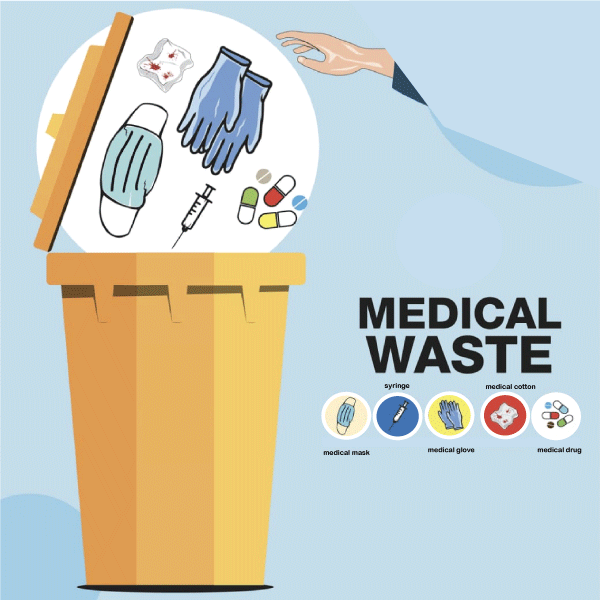Biomedical Waste DefinitionNowadays, the entire humanity is suffering from many problems that are somehow created by us directly or indirectly; one such measure issue is regarding the management of waste that is being generated every single second, and also it is an inevitable task, but the only thing we can do to prevent our environment from being degraded is by properly managing the waste. For this, the government has to take various stringent steps also. It is the need of the hour to take such measures to protect our environment and surrounding from being damaged. When discussing waste, it should be clear that different types of waste are generated every second: municipal solid, industrial, agricultural, hazardous, and biomedical. These are a few categories of garbage that are continuously exploiting the environment. Moreover, their management methods are also different and expensive, and their treatment plants and recycling plants need a lot of capital investment, human labor, and space. The people living near these recycling plants also face many problems like continuous foul smell, risk of fire, and landfill mountains, it emits poisonous gases such as hydrogen Sulfide which critically impact the human lungs and is the cause of lung cancer; it also releases greenhouse gases in large quantity, about 13 percent cases of Asthma came from landfill areas. In this article, we are explicitly discussing Biomedical Waste and the threats that occur from it. What is Biomedical Waste?The waste that is generated in hospitals, laboratories, researcher's labs, and many other sources which produce waste that contains infectious materials such as microbes, microorganisms, disease-causing bacteria and viruses, and many other things that are hazardous for both humans and the environment. Usually the biomedical waste is generated from the hospitals that include used cotton, syringes, needles, disposable scalpels, blades, swabs, bandages, disposable medical waste, waste from autopsies, infected animal samples, hazardous substances like mutagenic, teratogenic and carcinogenic, cytotoxic drugs that are being used in the cancer treatment and also their metabolites there are countless such type of waste that is being generated in every single second and moreover, it is hazardous for both our environment and for those health workers and rag pickers who separate out these biomedical waste from other waste at that they were completely exposed to those hazardous substance which can cause severe damage to the waste pickers. 
The patients come to the hospitals to cure their diseases, but sometimes they are exposed to a new disease or a threat just by getting exposed to biomedical waste. Threats to the Environment from Biomedical Waste
Impact of Biomedical Waste on Humans
ConclusionLast but not least, different types of waste surround us, and ultimately, by their threats, some inevitable things don't have any such alternative now. Biomedical waste such as masks, syringes, gloves, cotton, sample collector, and many more is an example of their management. The higher authority has to impose some stringent steps that must be followed strictly by the hospital authority.
Next TopicCentrifugal Force Definition
|
 For Videos Join Our Youtube Channel: Join Now
For Videos Join Our Youtube Channel: Join Now
Feedback
- Send your Feedback to [email protected]
Help Others, Please Share









